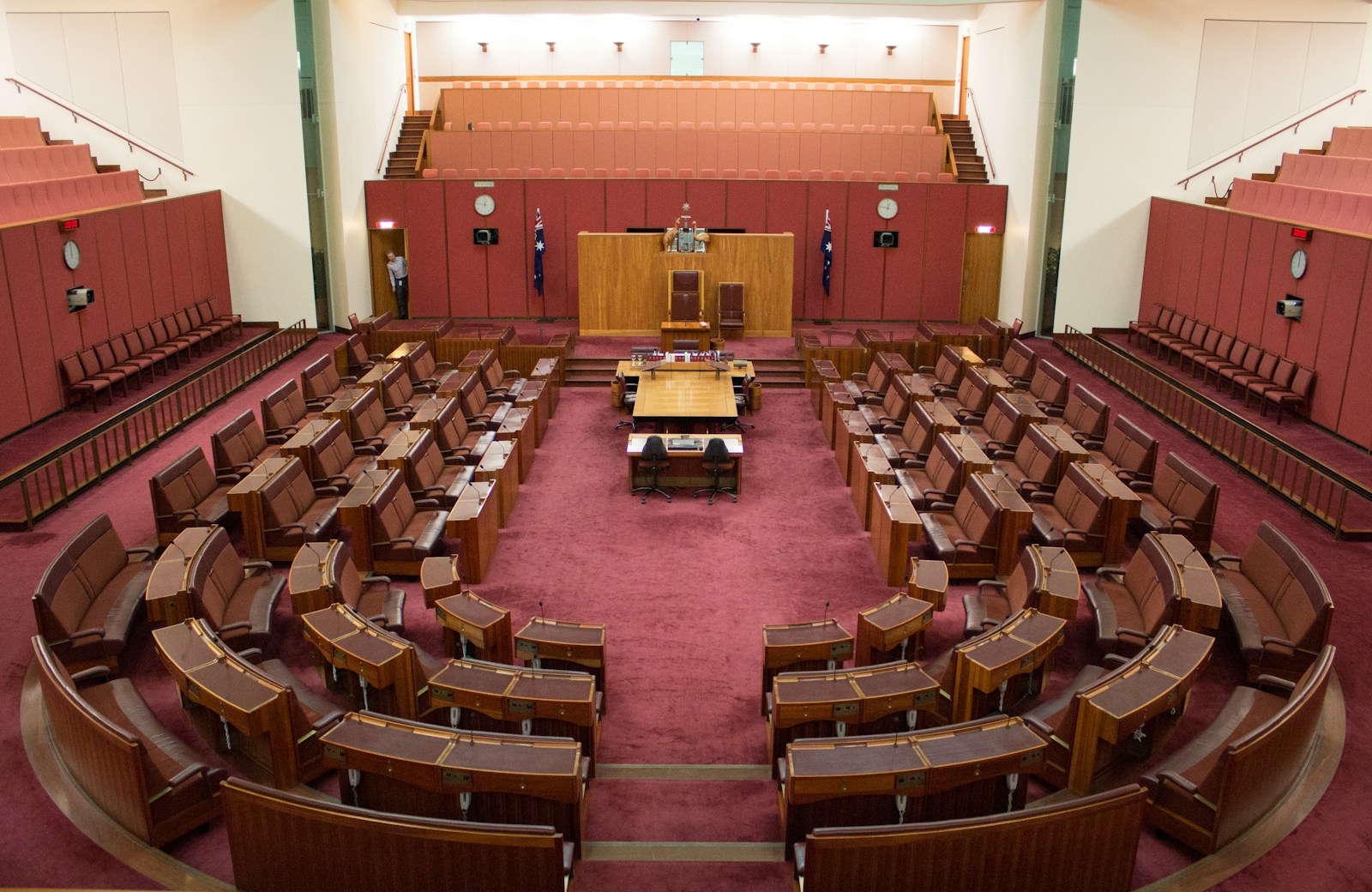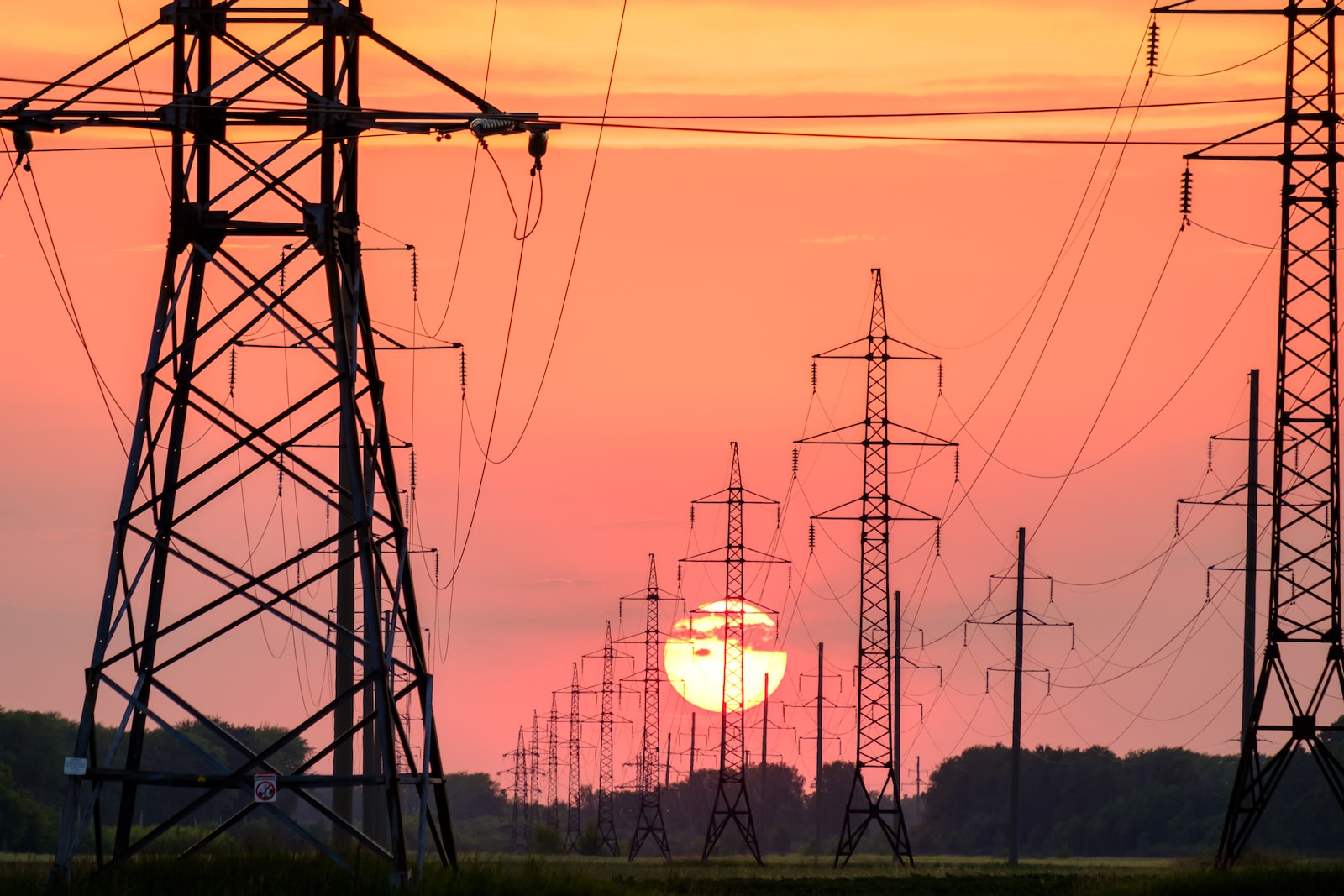Senator RENNICK: Hi, guys. How’re going? Given that heat is kinetic energy—the energy of motion—is it fair to say that CO2 traps heat, or is it fair to say that climate change theory invalidates the Stefan-Boltzmann law, which says radiation is emitted in all directions?
Dr Marshall : Are we sticking with classical physics, or do you want to go to quantum as well?
Senator RENNICK: Classical.
Dr Marshall : In classical physics, gases like CO2 and water itself in the atmosphere absorb energy from the sun, and they heat the surface of the earth. It’s a few years since uni physics, but from memory the earth is about 16 degrees hotter as a result of all of the gases in the atmosphere, and that’s been good for us so far—
Senator RENNICK: That’s why I asked that question. I put a question on notice last time and I was told that that was a hypothetical that couldn’t be answered.
Dr Marshall : From the point of view of classical physics, that’s the heat exchange, yes.
Senator RENNICK: So it radiates that too, doesn’t it? It don’t just absorb; it radiates.
Dr Marshall : It depends.
Senator RENNICK: It loses it either via conduction, radiation or convection—the three forms of heat transfer.
Dr Marshall : Generally speaking, the atmosphere is like a protective blanket around the earth that holds the heat in. That’s what makes us all a bit warmer than we otherwise would be without the atmosphere.
Senator RENNICK: Yes, that’s true. But, you’ve also got convection, don’t you, where hot air rises?
Dr Marshall : Of course. The air currents circulate, and the heat moves around.
Senator RENNICK: Just so we’re clear, though, heat does radiate as well absorb?
Dr Marshall : Yes. That’s where you’re talking about the Boltzmann constant.
Senator RENNICK: Yes. So that’s correct—it does radiate heat as well?
Dr Marshall : Yes.
Senator RENNICK: Where does radiation and heat—the energy from radiation—come from in the first instance?
Dr Marshall : That’s why I asked about whether it’s classical or quantum. If the sunlight hits the surface of an object, it will either be reflected or absorbed—
Senator RENNICK: I understand that. I asked: where does it come from initially?
Dr Marshall : The absorption of a photon of energy? This is the quantum thing—
Senator RENNICK: The creation of energy—where does it happen? I’ll give you a clue: where does it happen in the solar system?
Dr Marshall : In the sun—
Senator RENNICK: Exactly.
Dr Marshall : which is really hydrogen energy.
Senator RENNICK: Yes, exactly. So the energy initially comes from the fusion of hydrogen and helium, as per E=mc2.
Dr Marshall : Exactly.
Senator RENNICK: Yes. Thank you. So is it therefore fair to say that the amount of energy in the atmosphere is first and foremost determined by the output of the sun?
Dr Marshall : The amount of energy in the atmosphere—
Senator RENNICK: In the first instance.
CHAIR: Senator Rennick, I’ll allow you to go on a little bit, but this is an estimates hearing. It’s about the expenditure of public funds.
Senator RENNICK: Exactly, and we’re spending a lot of money here on theories that need to be tested. It’s on science.
CHAIR: I do not believe the estimates hearings are a discussion forum for scientific thought. We’ve really got to get to something that’s related to the expenditure of public funds. I’ll give you some latitude, but we do need to get somewhere close to the expenditure of government funds.
Senator RENNICK: Sure. I am getting there. Is it fair to say that CO2, when it absorbs heat, has four vibrational frequencies—2.8, 4.3—and two degenerate modes at around 15 microns. According to Wien’s law, the major peak radiation around that level would be 192 degrees Kelvin, or minus 80 degrees, for radiation. I’m not talking about conduction or convection here.
Dr Marshall : In general, molecules like CO2 tend to absorb more in the infrared than they do in the visible or the ultraviolet, and that’s why—
Senator RENNICK: Yes, that’s what I’ve just said. But, also, when they absorb in the infrared they generally have a peak in emissivity at a certain temperature, according to Wien’s law. Are you familiar with that?
Dr Marshall : Yes.
Senator RENNICK: I just wanted to clarify that. Where that emits up at the top of the atmosphere—minus 80 degrees is a long way up in the atmosphere. Yes? It’s fine. You don’t have to answer it. Where I’m getting to is that we effectively have three forms of heat transfer: radiation, convection and conduction. The main form of heat transfer in the atmosphere, after radiation comes down and heats the earth, is convection, yes?
Dr Marshall : You have a bit of both, actually, because the air moves and it can transfer heat through the physical movement of the air molecules or through re-radiation of the light. And that’s the quantum part of the effect, where a photon is absorbed and then it can be re-emitted, sometimes at a different wavelength.
Senator RENNICK: I guess my point is that radiation heats and convection cools. You’ve got evaporative cooling; you’ve got thermal currents; you’ve got clouds—you have a number of mechanisms that will cool the atmosphere as well as heat the atmosphere.
Dr Marshall : You have a flow of heat in and a flow of heat out.
Senator RENNICK: That’s right, and the second law of thermodynamics says that the entropy of a system will increase. If a lower atmosphere gets three degrees hotter, as per one of the IPCC forecasts, then, in theory, if you use the first law of thermodynamics—that the energy of the overall system won’t change—it would have to be three degrees cooler in a higher part of the atmosphere. Surely, if you apply the second law of thermodynamics, basically the atmosphere is eventually going to even out in terms of temperature, isn’t it? Because hot air does rise.
Dr Marshall : So—if I follow your logic—what do we know? We know that, over a very long period of time, the temperature of the earth has increased a little bit, about 16 degrees, as a result of—
Senator RENNICK: Greenhouse gases. Yes.
Dr Marshall : the absorption of radiation in the atmosphere by everything: CO2, water vapour, our breath—the whole nine yards. That’s an equilibrium situation. We also know that, if we change that equilibrium—if we put something else in the atmosphere that increases the absorption—then we’ll see a continued increase in temperature, because we know we’ve seen it before.
Senator RENNICK: Yes, I totally agree with that—no dramas. But greenhouse gases make up about five per cent of the atmosphere. You’ve got nitrogen and oxygen making up the other 95 per cent, but they also play a role in convection. When you say there’s a blanket around the earth, I think that’s a poor characterisation. I would describe it like this: if you’re sitting in a car with the windows wound up, you’re locking out your convection, right? But the reality is that, in a greenhouse, you might not have convection, but in the atmosphere you do. If you wind those windows down—or, when you come home in the evening and your house is hot, if you open your windows—the wind will blow in and convection will often even out the temperature, though not perfectly. I guess my point is that many of these models underestimate the impact of convection, don’t they?
Dr Marshall : But remember that it’s a closed system. If I use your analogy of the car, we’d have to vent atmosphere into space in order to get that change of mass—energy-mass equivalence; again, quantum theory—but we don’t do that. The atmosphere is pretty much trapped and that’s kind of why you have the greenhouse effect.
Senator RENNICK: But we have hydrogen escaping into the exosphere, and things like that. I’d also argue that, at the equator, you’ve got your troposphere, which is, what, 16 kilometres high, whereas at the poles it’s 10 kilometres high, so that hotter air expands and pushes out anyway. The idea that it’s a confined space, because heat is a function of volume—I can also argue with that, because the equator has a higher point of the troposphere. I would argue that proof of that is in your dry adiabatic lapse rate, which is the same at the equator as it is at the poles, despite the fact that there’s a much higher concentration of CO2 at the equator.
Senator CHISHOLM: Chair, if Senator Rennick wants to howl at the moon, can he do it on someone else’s time? You’ve given him a warning. This is ridiculous.
CHAIR: Senator Chisholm, let’s not—
Senator CHISHOLM: This is just ridiculous.
Senator RENNICK: This is very important.
Senator CHISHOLM: Oh, bull@#%&, mate.
Senator RENNICK: Hang on. We’re spending over $20 billion on subsidies for these renewables.
CHAIR: Let’s try to be respectful.
Senator RENNICK: I’m getting there. I’m almost there.
CHAIR: We have got nowhere near the expenditure of public funds as yet. I’m conscious of the time.
Senator RENNICK: Okay.
Dr Marshall : Senator, I would be worried if we were venting much atmosphere into space, because that wouldn’t be a very sustainable situation. So I don’t know that there can be a significant mass transfer, but—
Senator RENNICK: Well, no, molecules go off into space. I’m not saying that the atmosphere goes into space. Anyway, let’s get to the GenCost report. Basically your guys have come up with a discussion paper on GenCost. They’ve made a number of assumptions, including that coal-fired power stations last for 30 years. We’ve got one at Gladstone that’s been around since 1976 or 1978—it’s 42 years old and going on to 50. Why has the CSIRO assumed that coal-fired power stations only last for 30 years, when it’s well known that they last for over 50 years?
Dr Marshall : I know that power station—that’s the one that powers the smelter at Boyne Island, isn’t it?
Senator RENNICK: That’s exactly right.
Dr Marshall : I know that one well. I’ll let Dr Mayfield answer that, but when I read the GenCost report, what I read was a little bit different—that the coal-fired power stations that Australia already has will naturally be retired, regardless of anything else, regardless of any policy, for economic reasons by about 2040, as they reach the end of life. The question we were trying to answer after talking to the power companies was, if that’s true, what will you build? What will you build next? What do you need to build now so that Australians can get a lower cost of electricity in the future than we have now? That was really the purpose of that.
Dr Mayfield : As per our conversation back in February, with Paul Graham and myself, with respect to the power stations’ lives—they definitely have a technical life of 50 years and possibly longer—the context of the work that was being done was looking at what were the economic pathways forward for a range of different technologies for AEMO. The work looked at the economic life of the plant as well, given the changing conditions in the national system, and that’s where the 30 years comes from, given the different financing arrangements that are required.
Senator RENNICK: That’s interesting, because the Finkel report said that Kogan Creek, for example, only cost $9 a megawatt for operational costs. That’s a mine-mouth power station that’s owned by the Queensland people, so it’s not subject to market forces or anything like that. There’s 400 million tonnes of coal there. The Brownfield site, with the second pad already built—I find it difficult to believe that you could assume that was going to cost $2.80 a gigajoule. I do dispute your assumptions there, but I’ll finish off with one other question.
Professor Richard Herrington, Head of Earth Sciences from the Natural History Museum of London, has said that for the UK to meet its UK electric car targets of 2050 they would need to produce just under two times the total of annual world cobalt production, nearly the entire world’s production of neodymium, three-quarters of the world’s lithium production, and at least half of the world’s copper production. That’s a hell of a lot of energy that’s going to be required for batteries that mightn’t last more than a decade for just one country, isn’t it?
Dr Marshall : Yes, and we’re worried about batteries too, because they cost about three times more to recycle—the lithium batteries—than the actual value of the material. We’re very worried about that. That’s one of the reasons we leaned hard on hydrogen. We think hydrogen is a very attractive storage mechanism, and Australia could control that and build it here, rather than relying on rare-earth metals that are coming from China or other countries.
Senator RENNICK: Yes. And lithium’s a one-per-cent ore body as well, did you know that? You’ve got to mine 100 tonnes of it just to get one—
Dr Marshall : Yes, and it’s a very environmentally unfriendly material to process, which is why we don’t really process it here in this country. But if we could, and do it cleanly, that would be another interesting option for Australia. In general, I think we need to add more value to our raw materials here.
Senator RENNICK: I totally agree.
Dr Marshall : Because we’ll get more value, more jobs here.
Senator RENNICK: Yes. Thank you very much for your time. I appreciate it.






























